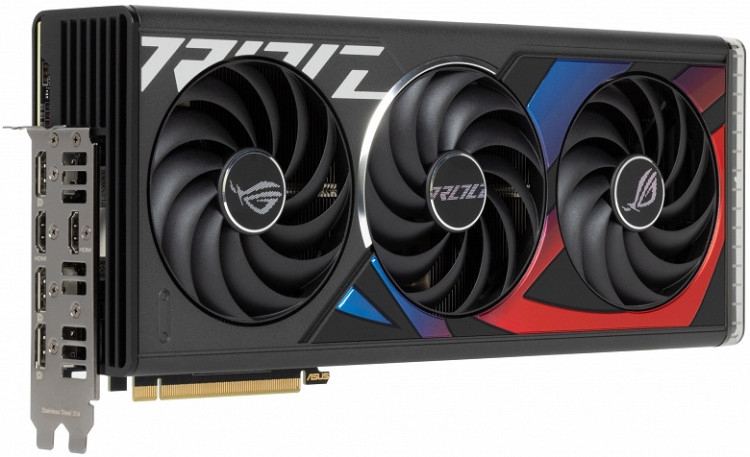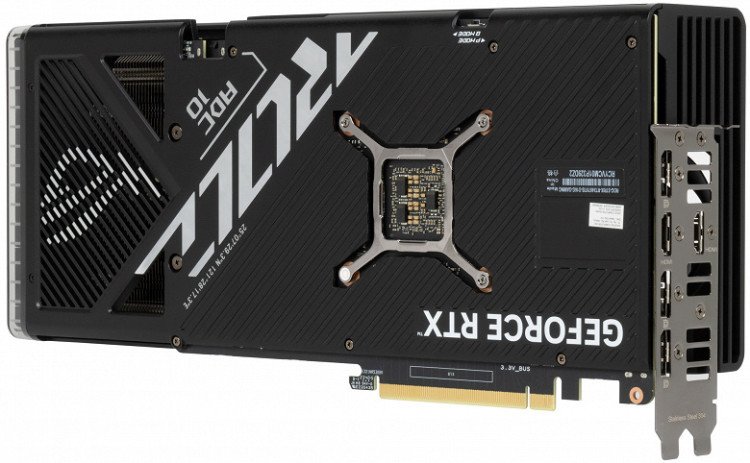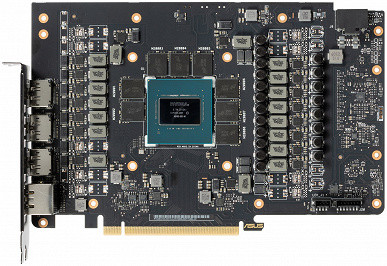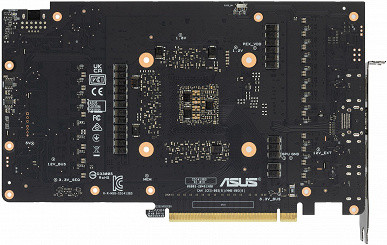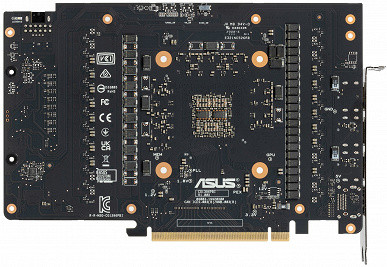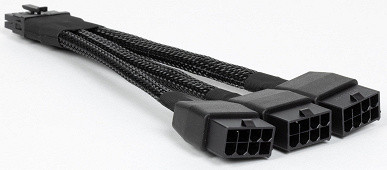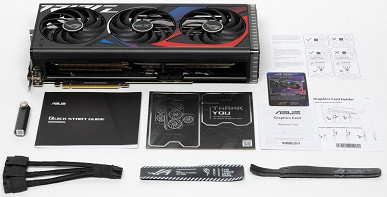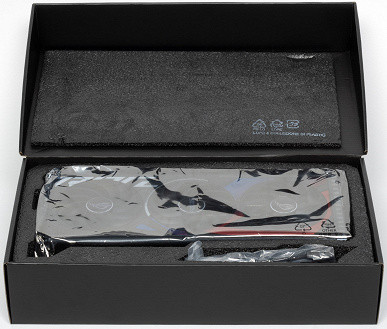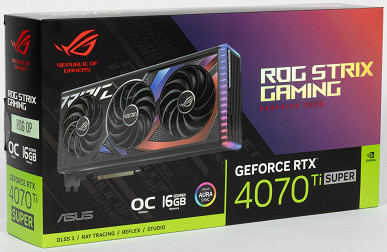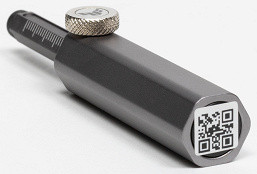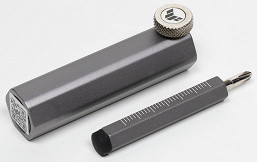Briefly about the main thing
The video card market is currently in a state of relative calm. It was expected that this fall, as usually happens two years after the release of the previous generation of graphics accelerators, new models from all three major manufacturers: AMD, Intel and Nvidia will be presented.
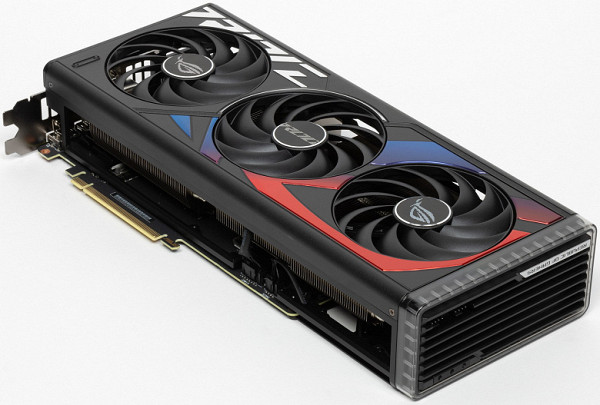
However, in the summer, optimism about the imminent release of at least flagship models from Nvidia and AMD has noticeably faded. Leaks indicate that the GeForce RTX 5090 will probably not be presented until 2025, and the announcement will take place in January at CES. At the same time, new cards from AMD may be presented. As for Intel, according to the latest rumors, the new Battlemage line may be released before the end of this year.
However, the consumer sector has already set itself up for the fact that new products are unlikely to appear this fall, so the existing families of video cards will remain relevant for a long time. Perhaps, intermediate products with a short life cycle will appear. In light of this, we continue to examine video cards available on the market that we have not yet had time to test.
Before detailed testing, we will provide brief information about the performance of the family to which the accelerator in question belongs, as well as its competitors. All this will be subjectively assessed on a seven-point scale.
Games without ray tracing (classic rasterization):
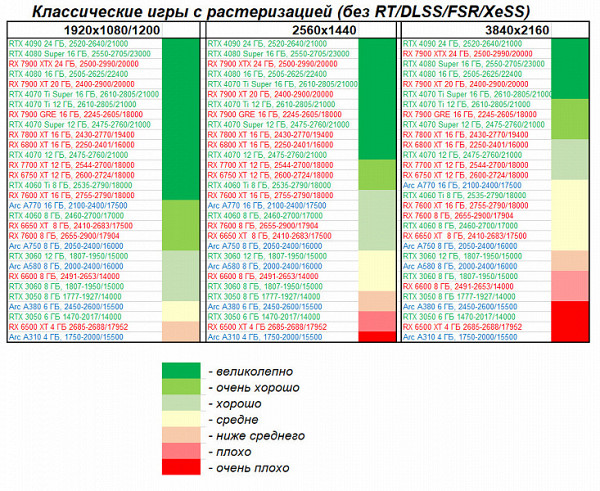
For many high-end and high-performance graphics cards, the performance at 2.5K and 4K resolutions is often limited not by the graphics card itself, but by other system components, especially the CPU. This also applies to the Asus card in question, as well as all other models based on the GeForce RTX 4070 Ti Super. With this card, you can enjoy comfortable gaming at resolutions up to 4K with maximum graphics settings (without using ray tracing).
Games using ray tracing and DLSS/FSR/XeSS:
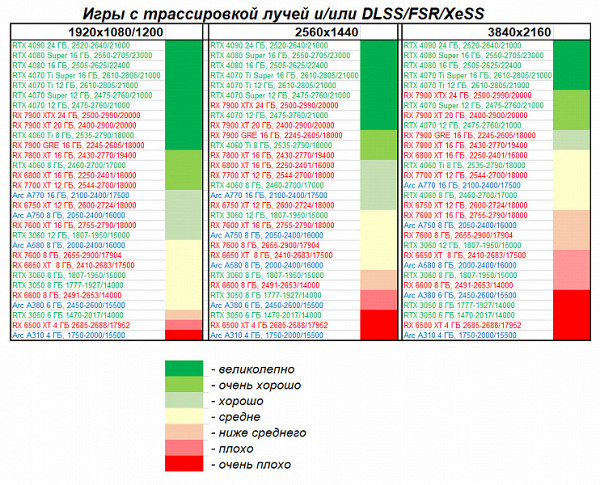
Enabling ray tracing (RT) does reduce performance, but technologies like Nvidia DLSS, AMD FSR, and Intel XeSS, which are already implemented in almost all RT games, help compensate for the loss of speed significantly. As a result, for powerful cards like the GeForce RTX 4070 Ti Super, all previous scores are preserved. At the same time, even the GeForce RTX 4070 Ti (without the Super prefix) is ahead of AMD's last-gen flagship, the Radeon RX 7900 XTX.
Card characteristics
Asustek Computer, known under the Asus brand name, was founded in 1989 in Taiwan, where its headquarters are located in Taipei. It is one of the oldest manufacturers of video cards and motherboards, which currently offers a wide range of products in various areas of the IT industry, including mobile devices. The company has production facilities in both China and Taiwan, and employs about 2,000 people.
| Asus ROG Strix GeForce RTX 4070 Ti Super OC 16GB 256-bit GDDR6X | ||
|---|---|---|
| Parameter | Meaning | Nominal value (reference) |
| GPU | GeForce RTX 4070 Ti Super (AD103) | |
| Interface | PCI Express x16 4.0 | |
| GPU Operating Frequency (ROPs), MHz | BIOS PMode: 2670(Boost)—2820(Max) BIOS QMode: 2670(Boost)—2820(Max) | 2610(Boost)—2805(Max) |
| Memory frequency (physical (effective)), MHz | 2625 (21000) | 2625 (21000) |
| Memory bus width, bit | 256 | |
| Number of computing units in a GPU | 66 | |
| Number of operations (ALU/CUDA) in a block | 128 | |
| Total number of ALU/CUDA blocks | 8448 | |
| Number of texture units (BLF/TLF/ANIS) | 262 | |
| Number of rasterization units (ROP) | 96 | |
| Number of Ray Tracing Blocks | 66 | |
| Number of tensor blocks | 268 | |
| Dimensions, mm | 330×150×63 | 310×130×70 |
| The number of slots in the system unit occupied by the video card | 4 | 4 |
| Color of PCB | black | black |
| Peak power consumption in 3D, W (BIOS PMode/BIOS QMode) | 286/286 | 285 |
| Power consumption in 2D mode, W | 40 | 40 |
| Power consumption in sleep mode, W | 11 | 11 |
| Noise level in 3D (maximum load), dBA (BIOS PMode/BIOS QMode) | 30.0/24.7 | 34.0 |
| Noise level in 2D (video viewing), dBA | 18.0 | 18.0 |
| Noise level in 2D (idle), dBA | 18.0 | 18.0 |
| Video outputs | 2×HDMI 2.1, 3×DisplayPort 1.4a | 1×HDMI 2.1, 3×DisplayPort 1.4a |
| Support for multiprocessor operation | No | |
| Maximum number of receivers/monitors for simultaneous image output | 4 | 4 |
| Power: 8-pin connectors | 0 | 0 |
| Power: 6-pin connectors | 0 | 0 |
| Power: 16-pin connectors | 1 | 1 |
| Weight of the card with the delivery set (gross), kg | 2.55 | 2.5 |
| Net weight of the card, kg | 1.8 | 2.0 |
| Max Resolution/Frequency, DisplayPort | 3840×2160@144 Hz, 7680×4320@60 Hz | |
| Maximum Resolution/Frequency, HDMI | 3840×2160@144 Hz, 7680×4320@60 Hz |
Memory

The card is equipped with 16 GB of GDDR6X SDRAM, distributed across eight 16 Gb chips on the front side of the PCB. The memory chips are from Micron (MT61K512M32KPA-21/D8BZC) and have a nominal operating frequency of 2625 MHz (21000 MHz effective).
Features of the card and comparison with Asus TUF Gaming GeForce RTX 4080 OC (16 GB)
We compare this card to a model from the same manufacturer that uses almost the same AD103 GPU. The GeForce RTX 4070 Ti Super differs from the GeForce RTX 4080 in that it has a lower version of the GPU and operating frequencies.
The card's core is designated as AD103-275 (while the GeForce RTX 4080 ends in 300, and the GeForce RTX 4080 Super ends in 400), and the release date is the 39th week of 2023.

The compared video cards from Asus belong to different gaming lines (TUF Gaming and ROG Strix), which is clearly visible in their design. The blocks with GPU and memory chips in these models are rotated relative to each other by 90 degrees, but these are just different revisions of the reference design — similar differences were found even among cards on the same GeForce RTX 4080. At the same time, the model from the TUF Gaming family has more seats for power phases, but in fact, fewer of them are installed than in ROG. This is logical, since the number of power phases affects the flexibility of core overclocking, which is especially important for overclockers.

The core power supply is shown in green, while the memory power supply is shown in red. All PWM controllers are located on the front side of the PCB. In total, the card has 19 power phases (16 for the core and 3 for the memory).
The 16 core power phases are controlled by the MP2898A PWM controller from Monolithic Power Systems, which supports a maximum of 16 phases.
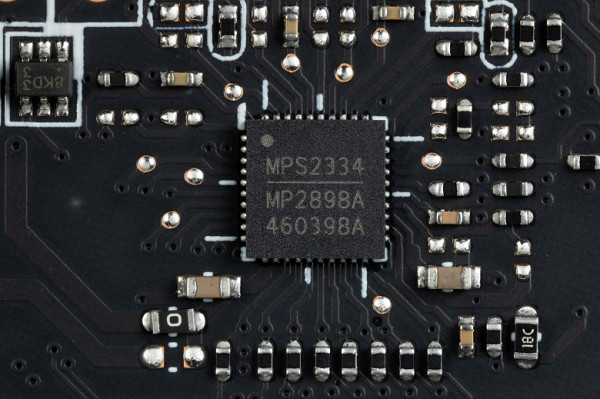
The power supply for the memory chips is controlled by the uP9512Q PWM controller (uPI Semiconductor).

The power supply, as is customary for Nvidia video cards, uses DrMOS transistor assemblies. In this case, the NCP303151 models from On Semi are used, each of which can withstand a maximum current of up to 50 A.

Also on the front side of the board there is a uS5650Q controller (uPI Semi), which is responsible for monitoring the card (tracking voltages and temperatures).
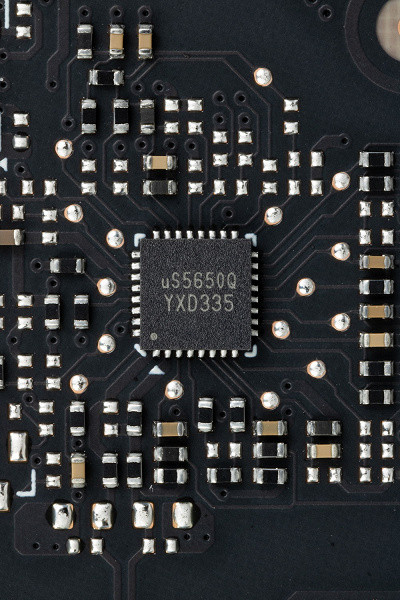
Asus traditionally assigns backlight control to the Aura controller.
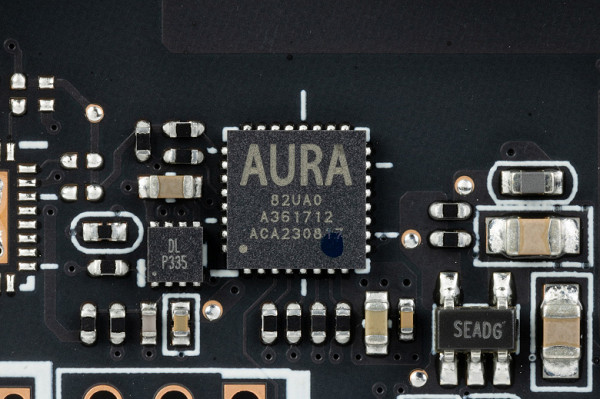
Another layout feature of this card compared to the TUF Gaming model is the presence of connectors for connecting case fans, which is typical for all ROG Strix graphics cards. On the back there are two 4-pin connectors for connecting standard fans with PWM control; their speed will be adjusted depending on the temperature of the graphics card. The cooler shroud is significantly longer than the board itself, so internal cables are used to connect the fans.

To control such fans, the card has an ITE controller.
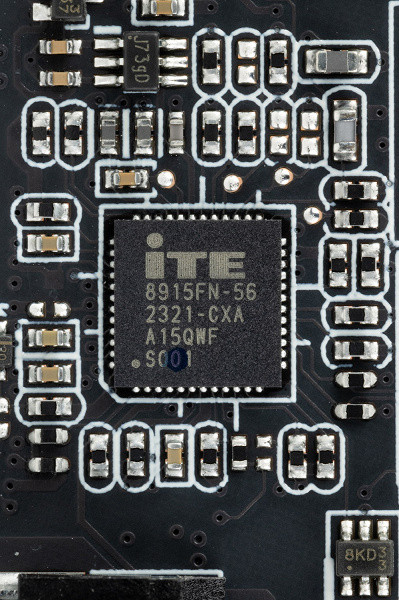
The card is equipped with a dual BIOS, which has become a tradition for high-end Asus solutions. On the end there is a switch for choosing between two BIOS versions: Performance mode (PMode) and Quiet mode (QMode), which essentially differ only in the rotation speed of the fans.
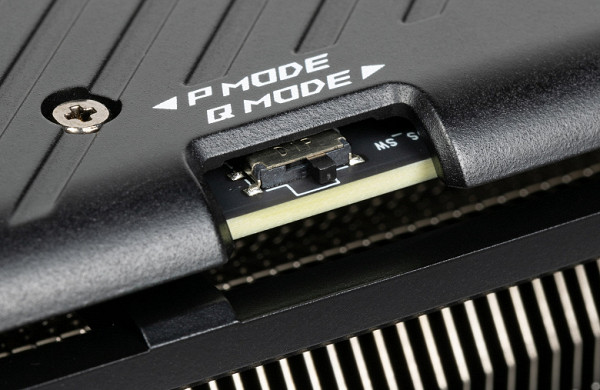
The standard memory frequencies correspond to the reference values. When activating OC Mode via the proprietary Asus Tweak Boost utility, the core frequency value in both BIOS modes exceeds the reference value by 4.2% (without OC Mode — by 2.3%). In games, we recorded an average performance increase of 1.5% relative to the reference card (in default mode, without Asus Tweak).
The power consumption of the Asus card in tests reached 286 W (maximum — 328 W). The consumption limit can be increased to 128%. When manually overclocking to the limit, I got maximum frequencies of 3000/23464 MHz, which provided a performance increase in games at 4K by almost 5.8% compared to the reference values. At the same time, power consumption increased to 303 W.
The Asus card is powered via a 16-pin PCIe 5.0 standard connector (12VHPWR).

The card comes with an adapter for this type of connector from 3 regular 8-pin connectors (familiar to everyone).
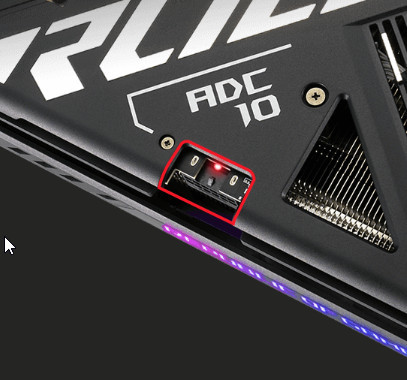
Let's note the decent dimensions of this card, especially in thickness: about 6.3 cm. As a result, the video card takes up 4 slots in the system unit.

The GeForce RTX 4070 Ti Super does not support multi-graphics configurations such as SLI, and there is no special connector for this on the top of the card.
In addition, the card has not the standard 4, but 5 video outputs: one more HDMI 2.1 has been added. However, the GPU can only output to 4 monitors at a time, so this solution provides greater flexibility in choosing video outputs.
The card can be controlled via the proprietary Asus GPU Tweak III utility.

Default Preset Mode Panel
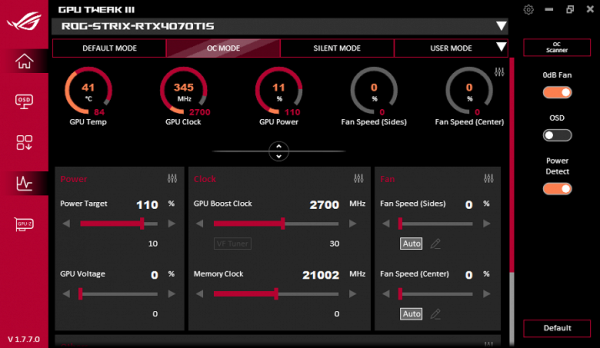
OC Mode Preset Panel

Manual settings panel
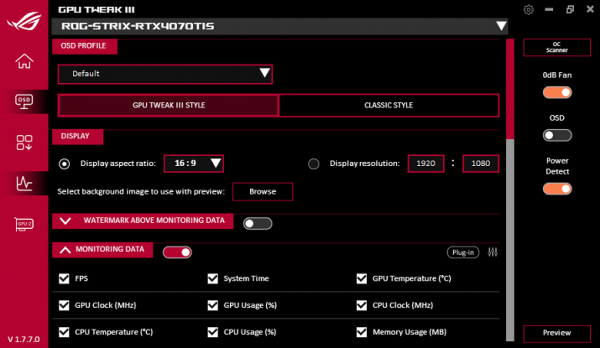
OSD Information Settings Panel
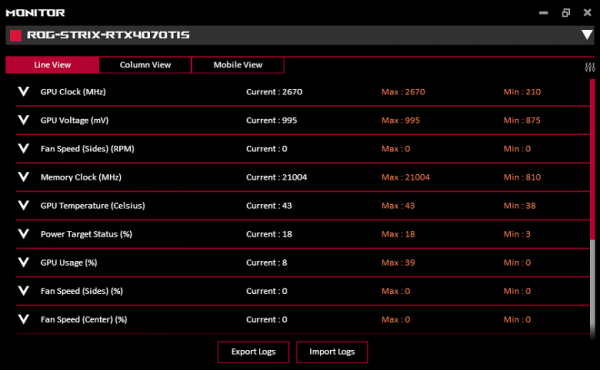
Dashboard
Heating and cooling
The cooling system includes a massive two-piece nickel-plated radiator with fins and heat pipes that effectively distribute heat across the radiator fins. Six heat pipes are soldered to a large copper nickel-plated base that fits tightly onto the GPU.
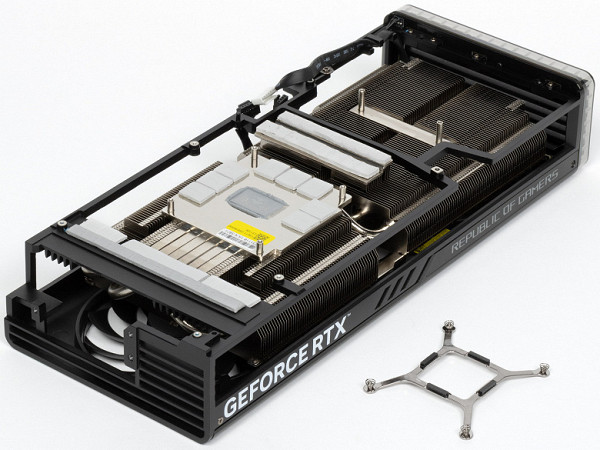
The memory chips are cooled by the same large heatsink via thermal pads, while the VRM power converters have separate small pads on the heatsink for improved heat dissipation.
The backplate not only protects the PCB, but also helps cool the back of the board by dissipating heat in the VRM area via thermal pads. This plate features large cutouts for efficient airflow through the heatsink.

The radiator has a shroud with three Axial-tech fans, the ends of whose blades are connected by a ring to more accurately direct airflow to the radiator. Each fan is equipped with two ball bearings. According to the manufacturer, this design allows for an increase in airflow by 23%, which improves cooling without increasing the noise level.
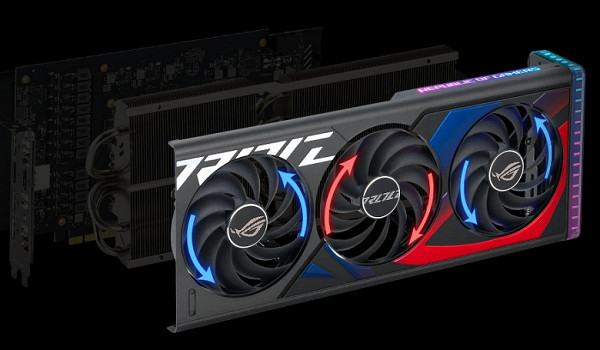
The central fan rotates in the opposite direction to the outer ones, which creates a «gear effect» and helps reduce airflow turbulence.
At low graphics card load, the fans stop if the GPU temperature drops below 50 degrees, and the memory chip temperature drops below 80 degrees. When the PC is turned on, the fans are active, but after the video driver loads, they begin to monitor the operating temperature and turn off.
Temperature monitoring:
Performance Mode:
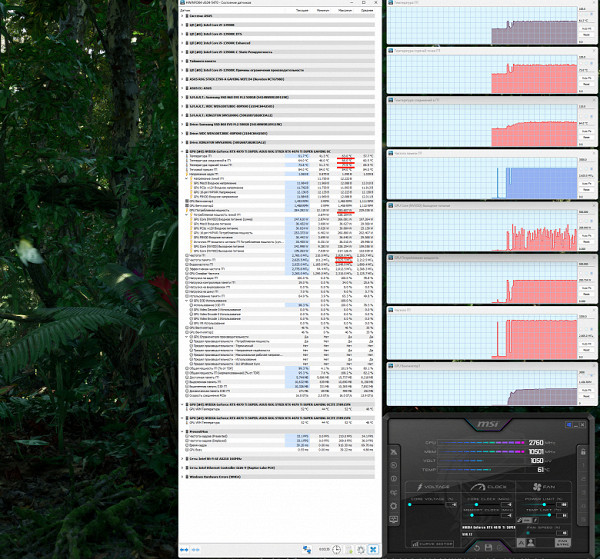
After two hours of load in Performance mode, the maximum core temperature did not exceed 63 degrees, and the memory temperature reached 66 °C, which is an excellent indicator for high-performance video cards. The card's power consumption was up to 286 W (peak — 328 W), and the fans worked at 1460 rpm. The temperature of the hottest GPU spot was 78 °C.
The maximum heating was observed in the central part of the PCB and at the PCIe connector.
With manual overclocking, the temperature and noise levels changed slightly (65/68 °C), but the maximum consumption increased to 303 W (peak — 354 W), which provided a 5.8% increase in performance. The temperature of the hottest GPU spot was 80 °C.
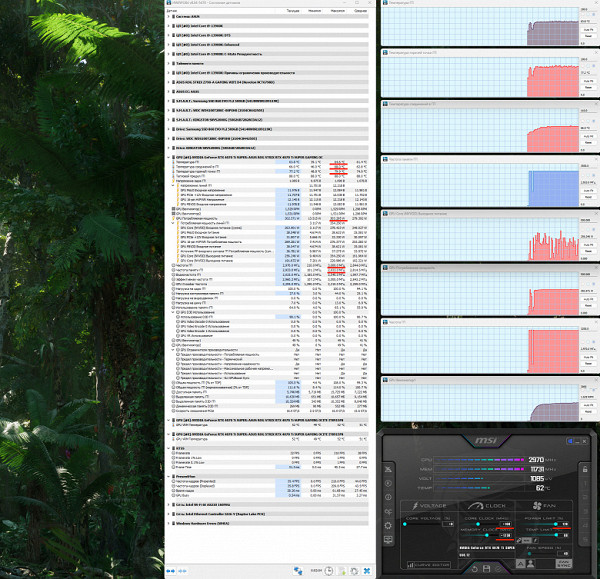
Quiet Mode:
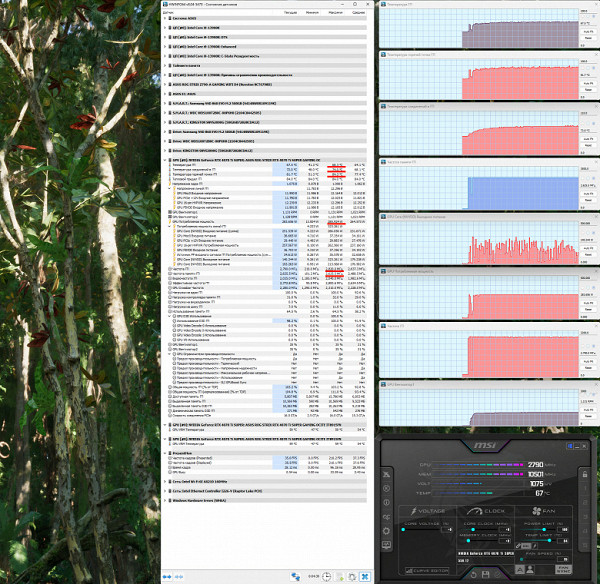
In Quiet mode, power consumption remained at 286 W, but the fan speed dropped to 1131 RPM. The core temperature increased to 68 °C, and the memory temperature rose to 74 °C, which is also excellent for graphics cards of this class. The GPU's hottest point was 84 °C.
Noise
The noise measurement technique was carried out in a soundproof room with minimal reverberations. The system unit in which the video cards were tested had no fans and did not create mechanical noise. The background noise level was 18 dBA, which includes the noise in the room and the noise meter. Measurements were taken at a distance of 50 cm from the video card, at the level of the cooling system.
Measurement modes:
- 2D idle mode: an Internet browser with the iXBT.com website, Microsoft Word and several Internet communicators are launched.
- 2D mode with watching movies: SmoothVideo Project (SVP) is used for hardware decoding with the addition of intermediate frames.
- 3D mode with maximum load: the FurMark test is used.
Noise level assessment:
- less than 20 dBA: relatively silent
- 20-25 dBA: very quiet
- 25-30 dBA: quiet
- 30-35 dBA: clearly audible
- 35-40 dBA: loud, but bearable
- above 40 dBA: very loud
In idle, Performance Mode and Quiet Mode were indistinguishable: the temperature did not exceed 32 °C, the fans did not work, the noise level remained at 18 dBA.
The situation did not change when watching a movie with hardware decoding.
Under maximum load in 3D, the temperature in Performance Mode reached 63 °C for the core and 66 °C for the memory. The fans worked at 1460 rpm, and the noise level increased to 30.0 dBA, which is already clearly audible.
The noise spectrogram was quite flat.
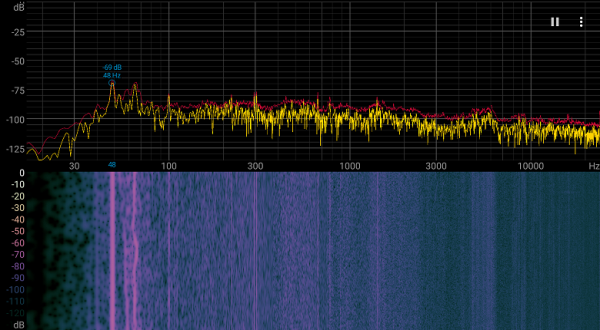
In Quiet Mode, the core and memory temperatures were higher, reaching 68 °C and 74 °C, respectively. However, the fans only rotated at 1131 RPM, and the noise level was recorded at 24.7 dBA, which is considered very quiet.
It should be noted that the heat generated by the card remains inside the system unit, so using a case with good ventilation is extremely important.
The card's backlighting is implemented in the end insert, as well as in the ROG family logo on the top end of the card.
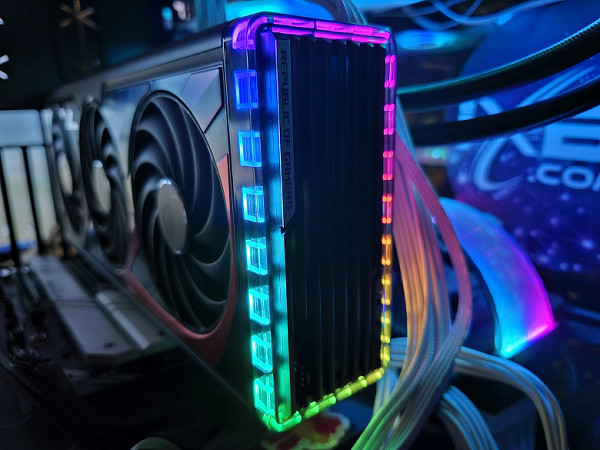
Backlight control is traditionally performed using the proprietary Asus program — Armoury Crate


Delivery set and packaging
In addition to the standard quick start guide, the package includes a power adapter from three 8-pin connectors to one 16-pin, a retractable stand/screwdriver, a branded tie-down strap, a cardboard souvenir, and an ROG club card.
The included graphics card stand/screwdriver can help prevent the card from sagging, although it is more practical to use it as a screwdriver. The retractable rod has marks for measuring the length in centimeters, and the structure is fixed in the extended position with a side screw. The maximum height of the stand is 14 cm, which makes it not universal for all cases.
Conclusions
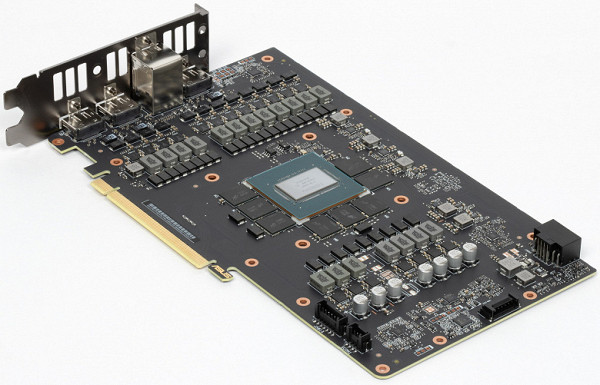
The Asus ROG Strix GeForce RTX 4070 Ti Super OC can consume up to 286 watts, with possible short-term peaks above this value. The cooling system of the video card is very powerful and efficient, providing relatively quiet operation, and in a special mode — even very quiet. The dimensions of the card are almost 34 cm in length and 15 cm in height, and it takes up 4 slots in the case. The set of video outputs includes 3 DP and 2 HDMI, allowing you to connect up to 4 monitors at the same time.
The video card is equipped with a 16-pin PCIe 5.0 power connector. Although the kit includes an adapter for connecting three PCIe 2.0 power connectors, it is recommended to use ATX 3.0 power supplies with PCIe 5.0 support and a 12VHPWR cable. The adapter cannot be bent directly after the 16-pin connector.
In addition to the original backlight on the end of the card, the kit also includes a sliding stand-screwdriver. The manufacturer provides a 3-year warranty on this device.
The video card will be especially interesting for overclockers due to its significant overclocking potential and the ability to increase the consumption limit to 128%, which provides a noticeable increase in performance.
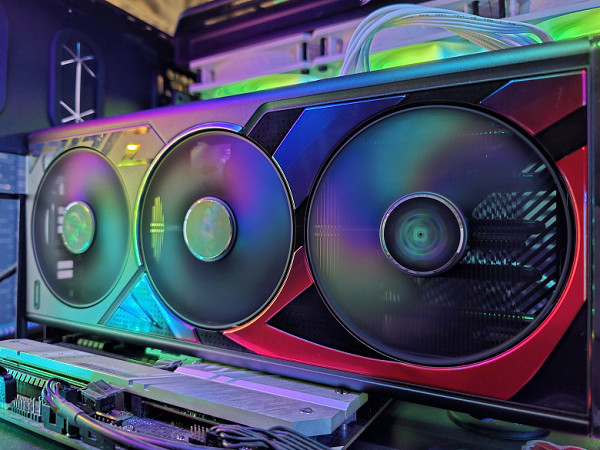
The GeForce RTX 4070 Ti Super is great for gaming at resolutions up to 4K with maximum graphics quality, both in classic games without ray tracing and in games with RT, even without DLSS support.
It is also worth noting the support of the HDMI 2.1 standard, which allows you to output 4K images at 120 FPS or 8K resolution using a single cable. The video card supports hardware decoding of video data in the AV1 format and RTX IO technology, which ensures fast transfer and decompression of data from storage devices directly to the GPU. However, it is worth mentioning that the DisplayPort version is limited to 1.4a, while competitors from the Radeon RX 7000 series already offer support for DisplayPort 2.1 UHBR13.5, allowing you to output 4K at 240 Hz without streaming compression over a single cable, which is their advantage over GeForce cards.

